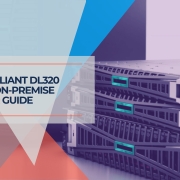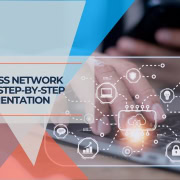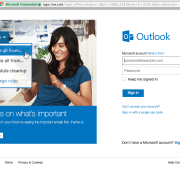Safeguard Your Small Business IT Infrastructure Without Breaking the Bank
Published: 2023-03-24 | Last updated: October 2025
Key Takeaway: Small businesses can implement robust cybersecurity measures without significant financial investment by leveraging built-in security features, establishing proper update procedures, and strategically using free security tools. The key is creating layered defenses that address the most common attack vectors while maintaining operational efficiency.
Small businesses face an increasingly complex cybersecurity landscape, with threats ranging from ransomware attacks to data breaches that can devastate operations. Despite common misconceptions about the high costs of enterprise-grade security, many effective protective measures can be implemented with minimal financial investment.
The reality is that most successful cyberattacks exploit basic security gaps rather than sophisticated vulnerabilities. By focusing on fundamental security practices and leveraging readily available tools, small businesses can build a comprehensive defense strategy that protects against the majority of threats. This approach requires more strategic thinking than financial resources, making it accessible to businesses operating on tight budgets.
Modern cybersecurity for small businesses isn't about having the most expensive tools—it's about implementing the right combination of practices, policies, and technologies. When combined with proper planning, as outlined in our complete server room setup guide, these security measures create a robust foundation for business operations.
Table of Contents
- 1 Establish a Comprehensive Update Management System
- 2 Maximize Built-in Security Features and Access Controls
- 3 Deploy Strategic Free Security Tools for Enhanced Protection
- 4 Develop a Security-Focused Organizational Culture
- 5 Create a Robust Data Protection and Recovery Strategy
- 6 Optimize Network Architecture for Security and Performance
- 7 Monitor and Maintain Security Effectiveness
- 8 Cost-Effective Implementation Timeline
- 9 Measuring Security Investment Return
- 10 Frequently Asked Questions
- 10.0.1 How much should a small business budget for cybersecurity?
- 10.0.2 Are free security tools really effective for business use?
- 10.0.3 How often should we conduct security assessments?
- 10.0.4 What's the biggest security mistake small businesses make?
- 10.0.5 Should we hire a security consultant or handle everything internally?
- 10.0.6 How do we balance security with employee productivity?
Establish a Comprehensive Update Management System
Outdated software remains one of the primary attack vectors for cybercriminals, who actively scan for systems running vulnerable versions of operating systems, applications, and firmware. A systematic approach to update management provides immediate security benefits while requiring no additional software purchases.
Create an Update Schedule and Inventory
Begin by cataloging your environment's software, operating systems, and connected devices. This includes workstations, servers, network equipment, printers, and any Internet of Things (IoT) devices. Document current versions, update schedules, and end-of-life dates for each system.
Monthly Update Priorities
Critical (Apply immediately): Security patches for operating systems, web browsers, and internet-facing applications
High (Within 48 hours): Updates for productivity software, email clients, and network infrastructure
Medium (Within one week): Firmware updates for printers, IoT devices, and peripheral equipment
Low (Monthly review): Feature updates that don't address security vulnerabilities
Implement Automated Update Strategies
Configure automatic updates where appropriate, particularly for endpoint protection, web browsers, and operating system security patches. Establish a testing protocol for business-critical systems using a secondary system or virtual environment to validate updates before deployment.
Windows Update for Business and similar enterprise update management tools provide granular control over update deployment timing and testing. These built-in tools allow businesses to benefit from automatic security updates while controlling feature updates that might disrupt operations.
Address End-of-Life Software
Identify and prioritize the replacement of software that no longer receives security updates. This includes older versions of operating systems, discontinued applications, and hardware with expired support contracts. Create a migration timeline that balances security needs with budget constraints.
Maximize Built-in Security Features and Access Controls
Modern operating systems and business applications include robust security features many organizations underutilize. These built-in capabilities often provide enterprise-level protection without additional licensing costs.
Implement Strong Authentication and Access Management
Establish a comprehensive password policy that requires unique, complex passwords for all accounts. Modern password requirements focus on length and uniqueness rather than complex character combinations, making them more secure and user-friendly.
- Require minimum 12-character passwords with a mix of letters, numbers, and symbols.
- Enable multi-factor authentication (MFA) for all administrative accounts and cloud services.
- Implement account lockout policies after failed login attempts.
- Regular review and removal of unused accounts and excessive permissions.
- Use built-in password managers in browsers and operating systems.
Configure Administrative Privilege Management
Apply the principle of least privilege by granting users only the minimum access necessary for their job functions. Create separate administrative accounts for IT tasks, and ensure they are used only for administrative purposes.
Windows Group Policy and similar tools in other operating systems provide granular control over user permissions, software installation rights, and system configuration access. By limiting users' actions on their systems, these tools can prevent many common security incidents.
Leverage Built-in Security Tools
Take advantage of native security features that are often overlooked:
Windows Security Features
Windows Defender: Provides real-time malware protection, behavioral analysis, and cloud-based threat intelligence
Windows Firewall: Configure inbound and outbound traffic rules to limit network exposure
BitLocker: Full-disk encryption for laptops and sensitive workstations
Controlled Folder Access: Protects against ransomware by restricting file system access
macOS Security Features
XProtect: Built-in antimalware scanning with automatic definition updates
FileVault: Full-disk encryption for data protection
Gatekeeper: Application verification to prevent malicious software installation
System Integrity Protection: Prevents modification of critical system files
Deploy Strategic Free Security Tools for Enhanced Protection
While built-in security features provide a solid foundation, strategic deployment of specialized free tools can significantly enhance your security posture. Focus on tools that address specific gaps in your security coverage rather than attempting to deploy every available option.
Network Security and Monitoring Tools
Network-level security tools provide visibility into traffic patterns and potential threats that may bypass endpoint protection:
pfSense Firewall Platform
A comprehensive open-source firewall and router solution can be installed on standard hardware or run as a virtual appliance. pfSense provides advanced features including intrusion detection, VPN capabilities, and detailed traffic analysis that rival commercial solutions costing thousands of dollars.
Wireshark Network Analysis
The industry-standard network protocol analyzer enables deep network traffic inspection to identify suspicious activities, performance issues, and security incidents. While requiring technical expertise, Wireshark provides unparalleled visibility into network communications.
Nmap Network Discovery
A powerful network scanning tool that helps identify devices on your network, open ports, and potential security vulnerabilities. Regular network scans with Nmap can reveal unauthorized devices or services that might indicate security breaches.
Vulnerability Assessment and Security Testing
Regular security assessments help identify weaknesses before attackers can exploit them:
OpenVAS Vulnerability Scanner
A comprehensive vulnerability management platform that performs automated security scans of networks, systems, and applications. OpenVAS includes a database of thousands of known vulnerabilities and provides detailed remediation guidance.
Nikto Web Server Scanner
Specialized tool for identifying security issues in web servers and web applications. Nikto tests for outdated server software, dangerous files, and common configuration errors that could lead to security breaches.
Wireless Network Security Assessment
Wireless networks present unique security challenges that require specialized testing tools:
Kismet Wireless Network Detector
An advanced wireless network discovery and intrusion detection system that identifies hidden networks, unauthorized access points, and potential wireless attacks. Kismet provides detailed information about wireless network configurations and security settings.
Important Security Testing Note
Security testing tools should only be used on networks and systems you own or have explicit permission to test. Unauthorized security scanning may violate laws and organizational policies. Always obtain proper authorization before conducting security assessments.
Develop a Security-Focused Organizational Culture
Technology alone cannot provide complete protection against cyber threats. Building a security-conscious culture within your organization creates a human firewall to prevent attacks that bypass technical controls.
Implement Comprehensive Security Awareness Training
Regular training helps employees recognize and respond appropriately to security threats. Focus on practical scenarios that employees will likely encounter rather than abstract security concepts.
- Monthly phishing simulation exercises with immediate feedback and additional training for those who fail
- Quarterly security awareness sessions covering current threat trends and attack techniques
- Clear incident reporting procedures that encourage employees to report suspicious activities
- Regular updates on new threats and security policies through internal communications
- Recognition programs that reward employees for identifying and reporting security issues
Establish Clear Security Policies and Procedures
Document security expectations and procedures in clear, accessible language. Policies should cover acceptable use of technology resources, incident response procedures, and consequences for security violations.
Regular policy reviews ensure security guidelines remain current with evolving threats and business needs. To emphasize their importance, consider integrating security requirements into job descriptions and performance evaluations.
Create a Robust Data Protection and Recovery Strategy
Data protection extends beyond preventing unauthorized access to ensure business continuity in system failures, natural disasters, or successful cyberattacks.
Implement the 3-2-1 Backup Strategy.
Maintain three copies of critical data: the original plus two backups. Store backups on two different media types, with one copy stored offsite or in cloud storage. This approach protects against hardware failures, natural disasters, and ransomware attacks.
Backup Testing and Validation
Regularly test backup restoration procedures to ensure data can be recovered when needed. Document recovery time objectives and recovery point objectives for different types of data and systems. Conduct quarterly restoration tests using different scenarios to validate backup integrity and recovery procedures.
Develop an Incident Response Plan
Create detailed procedures for responding to security incidents, including data breaches, malware infections, and system compromises. The plan should include contact information for key personnel, external resources, and regulatory authorities.
Regular tabletop exercises help validate incident response procedures and identify areas for improvement. These exercises should simulate realistic scenarios and test both technical response capabilities and communication procedures.
Optimize Network Architecture for Security and Performance
Proper network design creates natural barriers to attack propagation while improving overall system performance and manageability.
Implement Network Segmentation
Separate network traffic based on function and security requirements. Create distinct network segments for user workstations, servers, guest access, and Internet of Things devices. This approach limits the potential impact of security breaches by containing threats within specific network segments.
Understanding proper network architecture becomes even more critical when implementing comprehensive infrastructure solutions, as detailed in our server selection guide, which covers how different server configurations integrate with security-focused network designs.
Configure Secure Remote Access
Establish secure methods for remote access that don't compromise network security. Virtual Private Networks (VPNs) provide encrypted connections for remote workers, while jump servers can provide secure access to internal resources without exposing them directly to the internet.
Guest Network Isolation
Create separate wireless networks for visitors and contractors that provide internet access without access to internal business resources. Configure guest networks with time-based access controls and bandwidth limitations to prevent abuse.
Monitor and Maintain Security Effectiveness
Security is an ongoing process that requires regular monitoring, assessment, and improvement. Establish metrics and procedures to evaluate the effectiveness of your security measures and identify areas for enhancement.
Implement Security Logging and Monitoring
Configure systems to generate security logs and establish procedures for regular log review. Focus on monitoring authentication failures, privilege escalations, network anomalies, and system configuration changes.
Free log analysis tools like ELK Stack (Elasticsearch, Logstash, and Kibana) can provide enterprise-level log management and analysis capabilities. These tools help identify patterns and trends that might indicate security issues or system problems.
Conduct Regular Security Reviews
Schedule quarterly security assessments that review user access permissions, system configurations, and security tool effectiveness. These reviews should identify unused accounts, excessive permissions, and configuration drift that might create security vulnerabilities.
Document security review findings and track remediation efforts to ensure identified issues are addressed promptly. Use these reviews to update security policies and procedures based on lessons learned and changing business requirements.
For organizations looking to expand their security capabilities, integrating these practices with broader IT infrastructure improvements, such as those covered in our virtualization strategies guide, can provide additional security benefits through improved system isolation and management.
Cost-Effective Implementation Timeline
Implementing comprehensive security measures doesn't require significant upfront investment. A phased approach allows businesses to build security capabilities gradually while maintaining operational continuity.
Phase 1: Foundation (Month 1-2)
Enable automatic updates, configure built-in security features, implement strong password policies, and establish basic backup procedures. This phase requires minimal financial investment while providing immediate security improvements.
Phase 2: Enhanced Protection (Month 3-4)
Deploy free security tools for network monitoring and vulnerability assessment, implement network segmentation, and establish security awareness training programs. Focus on tools that address specific gaps identified during the foundation phase.
Phase 3: Advanced Capabilities (Month 5-6)
Implement comprehensive logging and monitoring, conduct regular security assessments, and establish incident response procedures. This phase focuses on proactive threat detection and response capabilities.
Each phase builds upon previous improvements while allowing businesses to spread implementation efforts and any associated costs over time. This approach also provides opportunities to evaluate the effectiveness of implemented measures before proceeding to more advanced capabilities.
Many organizations find that combining these security improvements with modern collaboration tools, as outlined in our essential collaboration software guide, creates synergies that improve both security and productivity.
Measuring Security Investment Return
While security measures represent a cost center, they provide measurable business value through risk reduction, compliance support, and operational efficiency improvements.
Quantifiable Security Benefits
- Reduced downtime from malware infections and security incidents
- Lower insurance premiums through demonstrated security controls
- Improved customer confidence and competitive advantage
- Compliance with industry regulations and customer security requirements
- Enhanced employee productivity through reliable, secure systems
Document security incidents and their associated costs to demonstrate the value of preventive measures. This information supports future security investments and helps justify the time and resources dedicated to security activities.
Effective cybersecurity for small businesses requires a strategic approach that balances protection with practicality. Small businesses can achieve robust protection without significant financial investment by focusing on fundamental security practices, leveraging available tools, and building security awareness throughout the organization. The key is consistent implementation and continuous improvement rather than pursuing the most expensive or complex solutions.
For businesses ready to upgrade their IT infrastructure, our comprehensive server room setup guide provides the foundation for implementing these security measures within a properly designed IT environment.
Frequently Asked Questions
How much should a small business budget for cybersecurity?
Small businesses should allocate 3-5% of their IT budget to cybersecurity, though this can vary based on industry and risk tolerance. Many effective security measures require time investment rather than financial expenditure. Focus on implementing free and low-cost solutions first, then gradually invest in more advanced tools as your business grows and security needs become more sophisticated.
Are free security tools really effective for business use?
Many free security tools provide enterprise-level capabilities and are widely used by organizations of all sizes. Tools like pfSense, OpenVAS, and Wireshark are industry standards that compete directly with commercial alternatives. The key is selecting tools that address specific security needs and ensuring you have the technical expertise to implement and maintain them properly.
How often should we conduct security assessments?
Perform monthly basic security reviews, comprehensive assessments quarterly, and annual full security audits. Monthly reviews should focus on user access permissions and system updates. Quarterly assessments should include vulnerability scans and policy reviews. Annual audits should evaluate the entire security program and identify areas for improvement.
What's the biggest security mistake small businesses make?
The most common mistake is treating security as a one-time setup rather than an ongoing process. Businesses often implement initial security measures but fail to maintain them through regular updates, monitoring, and staff training. Effective security requires consistent attention and continuous improvement as threats and business needs evolve.
Should we hire a security consultant or handle everything internally?
Start by internally implementing basic security measures, then consider consulting support for specialized areas like penetration testing or compliance requirements. Many small businesses successfully manage day-to-day security operations internally while using consultants for periodic assessments and strategic guidance. The key is building internal security knowledge while leveraging external expertise where needed.
How do we balance security with employee productivity?
Focus on security measures that enhance rather than hinder productivity. Modern security tools often improve system performance and reliability while providing protection. Involve employees in security planning to identify solutions that meet both security and usability requirements. Well-implemented security measures should be largely transparent to users while providing robust protection.











Leave a Reply
Want to join the discussion?Feel free to contribute!